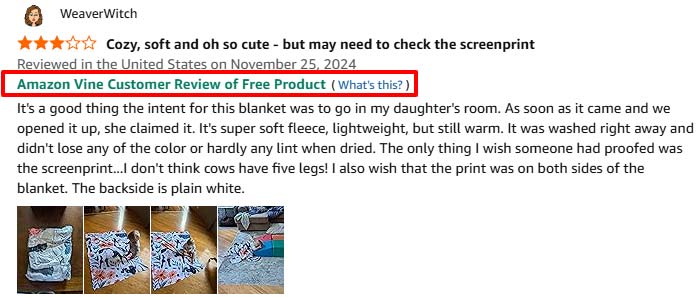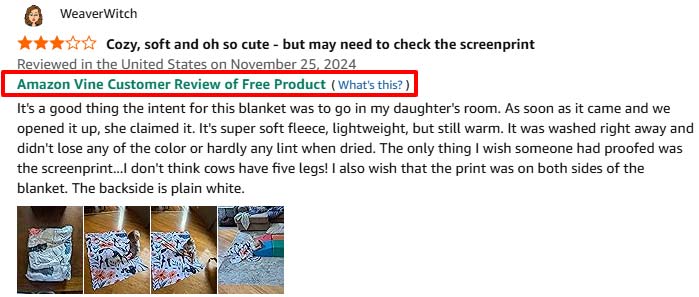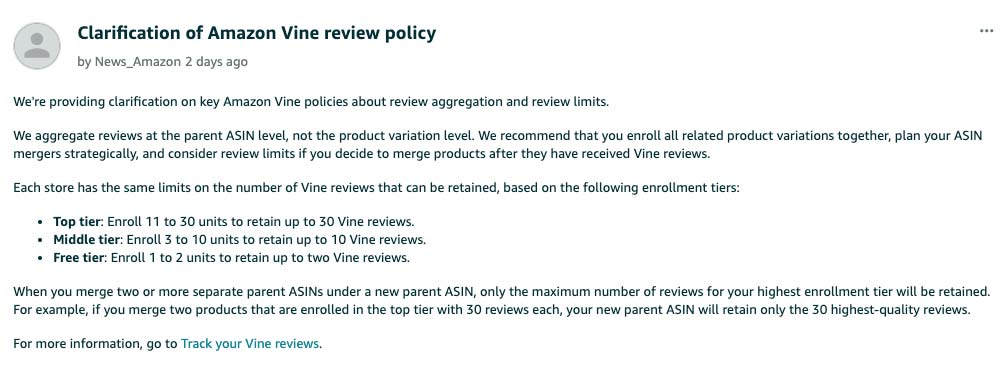We all check the reviews of a product we’re shopping for online. As consumers, we’ve become accustomed to taking the thoughts and opinions of strangers on the internet to determine the value, usefulness, quality, etc. of millions of items. So when a brand launches a new product, getting those reviews is a critical early step in establishing that product. Enter the Amazon Vine program.
What Is Amazon Vine?
In a nutshell, Amazon Vine is an invite-only program that allows reviewers who have established themselves with frequent, detailed, and objective reviews to request sample products enrolled in Vine. In exchange for the free item, the Vine Voice is expected to provide a robust review. These reviews are required to be objective and cannot come from anyone connected to the brand. They are also moderated to crack down on fraudulent or suspicious review practices.
The reviews are then posted, moderated by Amazon, and appear on the product detail page with a special badge indicating that this was a review in exchange for a free product.

So, brands benefit from this program by enrolling their SKUs, shoppers with an interest in the product request the sample, Amazon ships it out, and the reviewer evaluates the product. Simple right? Not any longer.
Amazon Vine has tiers where brands can select the number of units they are dedicating to a Vine. This allows them to limit the cost of their free product and prevent too many reviews for a free product, as this option could erode the perceived brand value. In the highest tier, a brand can allot 30 units for review for $200. If a brand wants/needs to enroll fewer products, there is the option to enroll one to two units for free, or three to 10 units for $75.

Updates to the Amazon Vine Program
Okay, so what’s the change that has sellers scrambling? Well, it’s been a long-established strategy among sellers to enroll multiple variants of the same product into Vine as independent listings. Then, when the reviews come in, the brand creates a parent and creates a variation of all the enrolled Vine products, thus combining all the Vine reviews.

For example, a brand could enroll 10 units of a red pen, 10 units of a black pen, 10 units of a green pen, and 10 units of a blue pen with the Vine program. All the pens are the same style, just in three different colors.
For this enrollment, the brand would pay $300 and get the opportunity to receive 40 reviews, above the 30 maximum limit of the Vine program per parent listing. This is allowed because the products have not been added to a variation yet. Once the brand determines that enough reviews have come in on each independent listing, the brand will then create the variation, combining the review count and star average.
Amazon is now cracking down on this practice, as it goes against the spirit of the Vine Program. When a new variation is created with multiple Vine-reviewed products, the merged product can carry over only as many Vine reviews as the highest enrollment tier. The question is, what reviews will be cut and which will stay visible on the product page?
Amazon’s algorithm cherry-picks what it calls the “highest-quality” feedback, weighing factors like:
- Helpfulness votes
- Review the details and length
- Recency
Star ratings matter, but they’re a secondary filter. That means a short, “Love it! ★★★★★” could lose out to a three-paragraph four-star critique.
Understandably, sellers are scrambling to understand what to do next. Many Amazon sellers paid good money for multiple Vine campaigns with the clear intention of merging ASINs later. Now they’re learning that half those reviews may vanish, and Amazon hasn’t clarified whether the cap applies retroactively. The rush is to identify those products that will be most impacted by this change and evaluate the reviews on the page to anticipate whether a portion of the reviews were removed, what the new review count and average star rating would be.
Sellers will now have to rely more on tried-and-tested methods of growing a new product’s reviews and less on strategic loopholes, as Amazon continues to update its policies.








